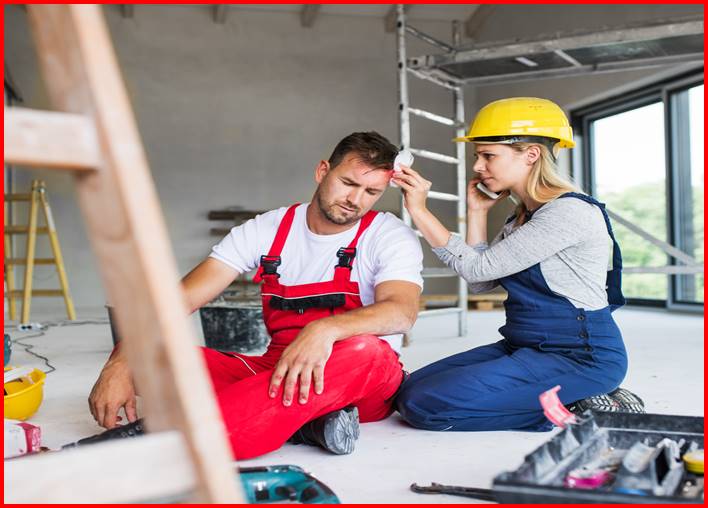Navigating Workplace Safety with Fall Protection Expertise
Workplace safety, particularly in high-risk environments, demands meticulous attention and specialized knowledge akin to the expertise offered by fall protection consultants. This article delves into the various aspects of ensuring safety against falls at the workplace, highlighting practical strategies and the importance of a holistic approach to fall protection.
The Importance of Risk Assessment in Fall Protection
Risk assessment is a critical step in fall protection, requiring a thorough workplace analysis to identify potential hazards. This process involves examining every aspect of the work environment, including the height at which tasks are performed, the nature of the surfaces, and any obstacles that could contribute to fall risks. A detailed risk assessment helps identify obvious hazards and brings to light less apparent risks. It is an ongoing process that should be revisited regularly, mainly when changes occur in the workplace, such as new equipment installations or changes in work processes. Employing experienced fall protection consultants for this assessment can provide insights into the latest safety standards and innovative solutions to mitigate risks.
Training and Education for Employees
The effectiveness of fall protection measures is mainly dependent on the awareness and training of the workforce. Comprehensive training programs are essential, focusing on correctly using fall protection equipment and recognizing potential fall hazards. Training should blend theoretical knowledge and practical demonstrations, ensuring employees understand the importance of safety protocols and the correct usage of safety gear. Regular refresher courses are crucial to update the workforce on new safety guidelines and technologies. Beyond formal training, fostering a safety culture through ongoing education and open communication encourages employees to be alert and proactive in identifying and reporting potential hazards.
Selecting the Right Fall Protection Equipment
Selecting the appropriate fall protection equipment is a critical decision that depends on the hazards identified in the risk assessment. The range of equipment available includes full-body harnesses, safety nets, lanyards, and fall arrest systems, each designed for specific scenarios. For instance, full-body harnesses are suitable for workers who need mobility at height, while safety nets are ideal for areas where workers are at risk of falling from edges. The quality and compatibility of equipment are paramount, as is ensuring that all equipment meets or exceeds safety standards. Regular inspections and maintenance of this equipment are equally important to ensure they remain in optimal condition for use.
Implementing Fall Protection Policies and Procedures
Adequate fall protection involves having the right equipment and implementing robust policies and procedures. These policies should detail every aspect of fall protection, including equipment usage, reporting protocols for potential hazards, and emergency response procedures. Clear guidelines must be established for regular safety audits, equipment inspections, and maintenance schedules. These policies should be accessible to all employees and regularly reviewed to make sure they remain relevant and practical. Moreover, the involvement of employees in developing these policies can lead to better understanding and adherence, as they provide valuable insights into the practical aspects of their daily work.
The Role of Technology in Fall Protection
Technology plays a significant role in enhancing fall protection strategies. Innovations like wearables that monitor workers’ positions and alert them to potential hazards are becoming increasingly common. These devices can also collect data to identify trends in safety incidents, providing valuable insights for improving safety measures. Drones are another technological tool that can be used for inspecting hard-to-reach areas, reducing the need for workers to risk exposure to fall hazards. Additionally, advanced software systems can aid in risk assessment, training, and tracking compliance with safety protocols, streamlining the entire fall protection program.
Continuous Improvement and Feedback
It is the cornerstone of an effective fall protection strategy. This involves regularly reviewing and updating safety practices based on employee feedback, incident reports, and safety audits. Encouraging a culture where employees feel comfortable providing input about safety practices helps identify areas that need improvement. Learning from near misses and incidents is crucial in preventing future accidents. Moreover, staying abreast of industry developments and technological advancements ensures that the fall protection strategies are the most effective and up-to-date.
Conclusion
In conclusion, navigating workplace safety with a focus on fall protection is complex but essential. It requires a comprehensive approach, combining risk assessment, employee training, appropriate equipment selection, robust policies, adding technology, and a commitment to continuous improvement. fall protection consultants are crucial for workplace safety, and it’s essential to seek guidance from qualified experts in this field. They can provide valuable insights into the latest standards and best practices, to make sure that your workplace is equipped with the necessary fall protection measures to minimize the risk of accidents and injuries.
However, it’s essential to recognize that the ultimate responsibility for maintaining a safe work environment lies with both employers and employees. Businessmen must prioritize the safety of their workers by providing the necessary training, equipment, and resources to prevent falls. On the other hand, employees must be vigilant and take precautions to ensure their own safety and the safety of their colleagues.
By working together to establish a culture of safety and vigilance, employers and employees can lower the risk of falls and accidents in the workplace. This protects workers from harm and minimizes the financial and legal dangers associated with workplace injuries. Ultimately, prioritizing fall protection creates a safer and more productive work environment for everyone involved.
Navigating Workplace Safety with Fall Protection Expertise
